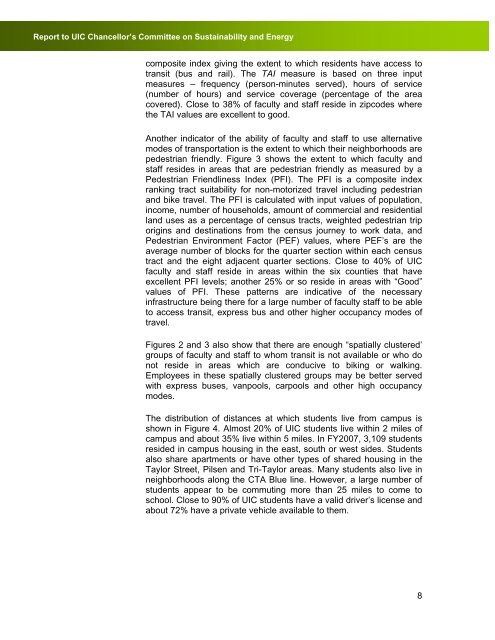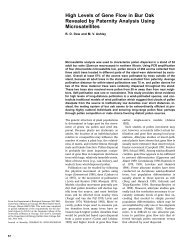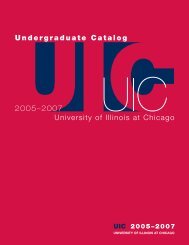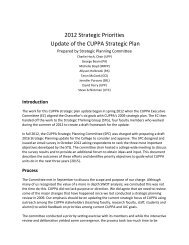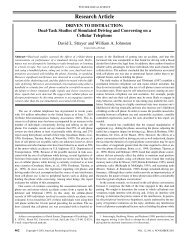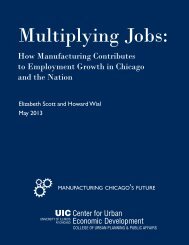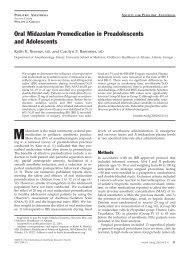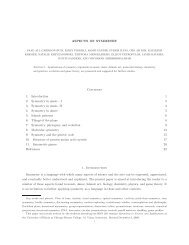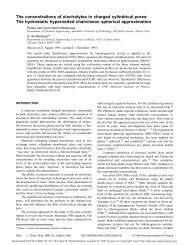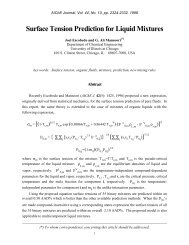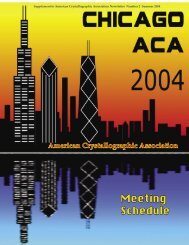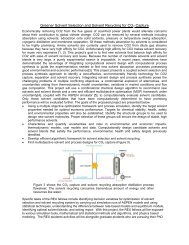Sustainable Transportation and Grounds in UIC - University of ...
Sustainable Transportation and Grounds in UIC - University of ...
Sustainable Transportation and Grounds in UIC - University of ...
Create successful ePaper yourself
Turn your PDF publications into a flip-book with our unique Google optimized e-Paper software.
Report to <strong>UIC</strong> Chancellor’s Committee on Susta<strong>in</strong>ability <strong>and</strong> Energy<br />
composite <strong>in</strong>dex giv<strong>in</strong>g the extent to which residents have access to<br />
transit (bus <strong>and</strong> rail). The TAI measure is based on three <strong>in</strong>put<br />
measures – frequency (person-m<strong>in</strong>utes served), hours <strong>of</strong> service<br />
(number <strong>of</strong> hours) <strong>and</strong> service coverage (percentage <strong>of</strong> the area<br />
covered). Close to 38% <strong>of</strong> faculty <strong>and</strong> staff reside <strong>in</strong> zipcodes where<br />
the TAI values are excellent to good.<br />
Another <strong>in</strong>dicator <strong>of</strong> the ability <strong>of</strong> faculty <strong>and</strong> staff to use alternative<br />
modes <strong>of</strong> transportation is the extent to which their neighborhoods are<br />
pedestrian friendly. Figure 3 shows the extent to which faculty <strong>and</strong><br />
staff resides <strong>in</strong> areas that are pedestrian friendly as measured by a<br />
Pedestrian Friendl<strong>in</strong>ess Index (PFI). The PFI is a composite <strong>in</strong>dex<br />
rank<strong>in</strong>g tract suitability for non-motorized travel <strong>in</strong>clud<strong>in</strong>g pedestrian<br />
<strong>and</strong> bike travel. The PFI is calculated with <strong>in</strong>put values <strong>of</strong> population,<br />
<strong>in</strong>come, number <strong>of</strong> households, amount <strong>of</strong> commercial <strong>and</strong> residential<br />
l<strong>and</strong> uses as a percentage <strong>of</strong> census tracts, weighted pedestrian trip<br />
orig<strong>in</strong>s <strong>and</strong> dest<strong>in</strong>ations from the census journey to work data, <strong>and</strong><br />
Pedestrian Environment Factor (PEF) values, where PEF’s are the<br />
average number <strong>of</strong> blocks for the quarter section with<strong>in</strong> each census<br />
tract <strong>and</strong> the eight adjacent quarter sections. Close to 40% <strong>of</strong> <strong>UIC</strong><br />
faculty <strong>and</strong> staff reside <strong>in</strong> areas with<strong>in</strong> the six counties that have<br />
excellent PFI levels; another 25% or so reside <strong>in</strong> areas with “Good”<br />
values <strong>of</strong> PFI. These patterns are <strong>in</strong>dicative <strong>of</strong> the necessary<br />
<strong>in</strong>frastructure be<strong>in</strong>g there for a large number <strong>of</strong> faculty staff to be able<br />
to access transit, express bus <strong>and</strong> other higher occupancy modes <strong>of</strong><br />
travel.<br />
Figures 2 <strong>and</strong> 3 also show that there are enough “spatially clustered’<br />
groups <strong>of</strong> faculty <strong>and</strong> staff to whom transit is not available or who do<br />
not reside <strong>in</strong> areas which are conducive to bik<strong>in</strong>g or walk<strong>in</strong>g.<br />
Employees <strong>in</strong> these spatially clustered groups may be better served<br />
with express buses, vanpools, carpools <strong>and</strong> other high occupancy<br />
modes.<br />
The distribution <strong>of</strong> distances at which students live from campus is<br />
shown <strong>in</strong> Figure 4. Almost 20% <strong>of</strong> <strong>UIC</strong> students live with<strong>in</strong> 2 miles <strong>of</strong><br />
campus <strong>and</strong> about 35% live with<strong>in</strong> 5 miles. In FY2007, 3,109 students<br />
resided <strong>in</strong> campus hous<strong>in</strong>g <strong>in</strong> the east, south or west sides. Students<br />
also share apartments or have other types <strong>of</strong> shared hous<strong>in</strong>g <strong>in</strong> the<br />
Taylor Street, Pilsen <strong>and</strong> Tri-Taylor areas. Many students also live <strong>in</strong><br />
neighborhoods along the CTA Blue l<strong>in</strong>e. However, a large number <strong>of</strong><br />
students appear to be commut<strong>in</strong>g more than 25 miles to come to<br />
school. Close to 90% <strong>of</strong> <strong>UIC</strong> students have a valid driver’s license <strong>and</strong><br />
about 72% have a private vehicle available to them.<br />
8


